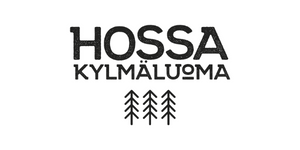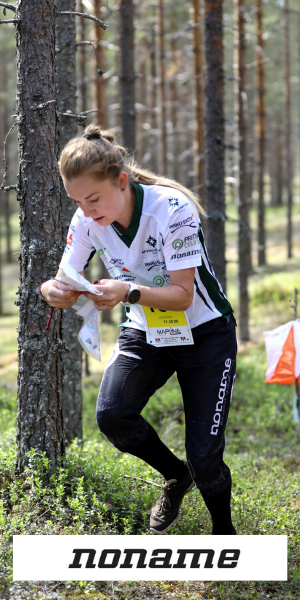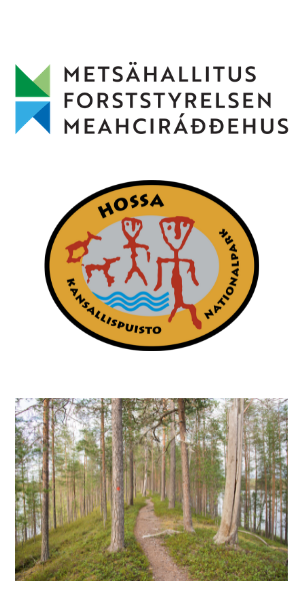Downburst Halted Kainuu Trail Race in Hossa National Park in Summer 2024
Published: 06.02.2025

A significant number of trees were felled in Hossa National Park during the downburst that struck on June 29, 2024. (Photo: Kainuu Trail / Hannu Huttu)
The 2024 Kainuu Trail running event experienced dramatic moments when a sudden downburst hit the Hossa National Park area on the afternoon of Saturday, June 29. Fortunately, there were no serious injuries, but the material damage was extensive.
"It was definitely one of the most intense moments of my life when the downburst struck Hossa National Park during our trail running race," says Jukka Liuha, race director of the Kainuu Trail, with a serious expression. "I've been organizing various events for over 18 years, and this was the first time I had to halt an event," he continues thoughtfully.
The downburst struck the Kainuu Trail on Saturday, June 29, at around 15:00.
"It must have been almost exactly 15:10 when the downburst hit the heart of our race centre in the yard of Hossa Visitor Centre. The situation felt surreal as we—both the organizing team and the participants present—held onto the event tents for about a minute during the worst moment of the storm," Liuha recalls.
Liuha would like to extend a very big thank you to all the organizers who helped on-site, the Hossa Visitor Centre, local lumberjacks and residents, the Finnish Red Cross Suomussalmi group, the rescue services, and the participants. Without everyone's help and close cooperation, the event day would have been much more challenging.
Immediate Evacuation of Runners
"Just a few minutes after the worst phase of the downburst had passed, we started calling the runners who were still on the trails," Liuha explains.
Fortunately, by the time the storm struck, only about a quarter of the event’s participants were still on the course. Most of them were running the longest distances (55 km and 78 km) and had GPS devices with them. Unfortunately, most of these runners were precisely in the area hardest hit by the downburst—the Kokalmus, Hoiluansärkkä, and Iso-Valkeainen regions.
A few 38-kilometer runners were still on the course as well, but they were so close to the finish line that evacuation was not deemed necessary. Additionally, evacuating the 38-km runners would have been much more difficult, as they did not have GPS tracking devices.
"The GPS devices carried by the long-distance runners made evacuation easier because we knew their exact locations. Unfortunately, we couldn’t reach all runners with GPS devices, as some had their phones on silent or turned off. Luckily, we managed to contact the most critical runners, who then relayed the evacuation plan to those behind them and stopped their progress at the designated evacuation points," Liuha says.
"From the GPS tracking, we quickly identified four to five reasonable evacuation points: the Iso-Valkeainen aid station, Kokalmus aid station, and Aittojoki campfire site. Additionally, in the very first moments of the downburst, we guided some runners closest to the storm to take shelter at the Ala-Valkeinen wilderness hut and the northern end of Lake Pitkä-Hoilua. From both locations, runners were later able to reach the Iso-Valkeainen aid station for evacuation," he continues.
The last runners on the course had safely reached evacuation points approximately two hours after the downburst hit. At around 16:45, the first group of runners was transported back to the start/finish area at Hossa Visitor Centre after local loggers cleared the Pistonlehdontie road leading to the Iso-Valkeainen aid station. Evacuations continued by private cars from Iso-Valkeainen and later by buses from the more distant evacuation points at Aittojoki and Kokalmus. Runners from these furthest points were fully evacuated about 3.5 to 4 hours after the downburst struck.
"Evacuations were significantly complicated by fallen trees blocking the roads, which meant we couldn't reach the most distant evacuation points until about 3.5 hours after the storm hit. Huge thanks to the local loggers and the Kainuu Rescue Department!" Liuha expresses his gratitude.

Runners waiting for evacuation at a lean-to shelter near the Kokalmus aid station. (Photo: Kainuu Trail / Hannu Huttu)
Updated Safety and Emergency Plan for 2025
Based on last year’s experiences, the safety and emergency plan for the upcoming summer’s event (and future editions) has been updated with several modifications, additions, and clarifications. Instructions have been refined for both organizers and participants.
Here are the key safety guidelines for Kainuu Trail participants:
- Participants are expected to strictly follow the instructions provided by the event organizers during the race. Reviewing the participant guide and mandatory equipment list is essential. In an emergency, participants must not leave an evacuation point without organizer permission.
- The mandatory long-sleeve thermal shirt and shell jacket for the 55 km and 78 km distances will be emphasized for all participants, even in hot weather. Conditions can change drastically during a race.
- We will also ensure that all runners carry the required safety equipment and encourage them to bring extra energy supplies in case of emergencies.
- Participants will be instructed to keep their phones turned on and with the sound on throughout the race.
- Officially designated evacuation points have been added to race maps with numbered locations. This will significantly speed up communication in emergency calls.
- Runners should install the 112 emergency app (with location services enabled) and place its icon on their phone’s home screen. In serious situations, participants will be instructed to call emergency services directly through the 112 app. For less urgent cases, an event-specific ICE number will be listed on race maps, and participants are advised to save this number in their phones.
Kainuu Trail 2025 Scheduled for Saturday, June 28
The 2025 Kainuu Trail race will take place on Saturday, June 28, 2025, in Hossa National Park. A record number of approximately 600 trail runners is expected to participate. The number of registrants has been steadily increasing for three consecutive years: in 2023, 467 runners signed up, while in 2024, the number grew to 545.
"We have an agreed-upon maximum limit of 600 runners with Metsähallitus (the governing body of Finland’s national parks)," Liuha explains. "Right now, we already have over 300 registered participants—more than 100 ahead of last year’s pace. It looks very likely that we will reach the full 600-runner capacity if registrations continue as in previous years."
Runners will have the opportunity to race on courses of 10 km, 21 km, 38 km, 55 km, and 78 km. Each distance includes an open category (ages 18 and up) for both men and women. Additionally, the 10 km course features a separate youth category for boys and girls aged 12 to 17.

































